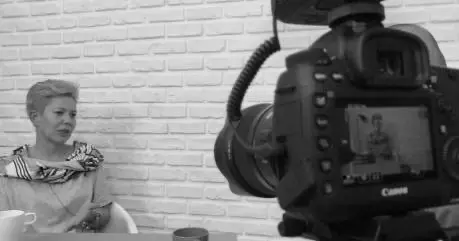How to Employ Video in Event Promotion?
Video plays an extremely important role in online marketing because it is the strongest tool for communicating brand values and building its image.
Video plays an extremely important role in online marketing because it is the strongest tool for communicating brand values and building its image.
They say video is the future and soon a vast majority of content on the internet will be in fact video. It is particularly important in marketing as it’s the strongest tool for communicating brand values and building its expert image.
Business will be business - there are industries where such form of marketing communication is not very effective. But there are industries where it’s paramount and one of such industries is MICE. How do you use video to market your training, conference, or trade event then?
In the event industry, it is somewhat of a custom that the organizer hires a video producer to make a video report. There’s nothing wrong with that, every Event Manager should make effort to have a polished video report for future use in the promotion of consecutive editions of the event. However, just as blogging without a strategy is not content marketing, production and distribution of video content without a strategy is not video marketing.
Since a video report is not enough, what else should you invest in?
The attendee cares about specific benefits that come with participation in your event - what they are about to experience (e.g. a location with an astonishing mountainous landscape instead of a boring conference venue where they’ve already been several times and they can find the toilet with their eyes closed), what they will learn, whom they will meet, and whether their participation will help them reach their business goals. Define key personas of your event’s clients and make a series of short videos telling their stories regarding the upcoming event. This way, you can make them feel that the ticket is worth every penny even before they buy it.
LIVE is the most engaging video format in the web. That’s because social media channels, such as Facebook, YouTube and Instagram, include native tools that let you broadcast livestreams without any technical knowledge. One click and you're on air. How to use such format to promote your event?
If participation in your event is paid, you should launch your own event management tool, where you can sell access to livestream and, after the event has ended, neatly packaged recordings of presentations. You can also make a series of short behind the scenes livestreams that show the vibe of your event without showing the know-how you need to pay to access. If tickets are free, the livestream should be widely available. With this strategy, you can increase RoI by scaling what seems unscalable, increase the reach of your video, and spread your event’s brand awareness.
Real time video is an effective tool to build your event brand as it makes a great impression on its prospective attendees. Imagine that the crew starts filming at 9AM. An hour later, they give raw video to the editor (who’s at the venue) and in three hours total, your video report is already on your social media channels. The event started at 10AM and you can watch the first part of the report at 12PM. With clever attendee management, you can make them share your video during the event.
To gain the trust of your prospective attendees and make them more likely to purchase the ticket, you can launch a series of webinars with your speakers. Let each of them host a one-hour webinar where they present a fraction of what the plan to present live on the stage. More than that, you can record these webinars and use them as a marketing creation in a display ad campaign promoting the event.
Each medium has its own rules, which gives you many more opportunities of reaching large numbers of prospective attendees and communicating values behind your event.
On YouTube, publish long and high-value versions of your videos in 16:9 ratio. The research carried out by vidyard.com shows that 86% of business video content is viewed on desktop, so YouTube a perfect place for such content. On Facebook, upload shorts, square in 1:1 format, so it’s convenient to watch them both on desktop and mobile. Don’t forget to add the subtitles. 56% of all video published in 2017 is shorter than two minutes so keep that in mind when uploading to Facebook. On Instagram, publish vertical, no longer than a minute videos in 4:5 ratio as posts, and 9:16 ratio as Stories.
Let your audience feel the urge to be present on all your channels. This is why it’s important that your videos are not copies of each other and that they look good in ratios appropriate to each medium.
Producing and distributing video content, it’s good to base on a marketing strategy and a publishing schedule set beforehand. It seems trivial - let’s make a video, upload it to Facebook and let it do its work. Well, it only seems trivial. Video is a double-edged sword that can seriously hurt you. Imagine that you invest 10,000 EUR in a video report of your event but it simply does not perform, you get no measurable value whatsoever. Is it the fault of the video? Nope. It’s the fault of the lack of marketing and strategic thinking. That’s why video marketing is a thing. Good luck!
Igor Podgórski
I provide training in filming, editing, and color grading. I produce podcasts and marketing videos for companies. I also edit and color grade videos on commission.
